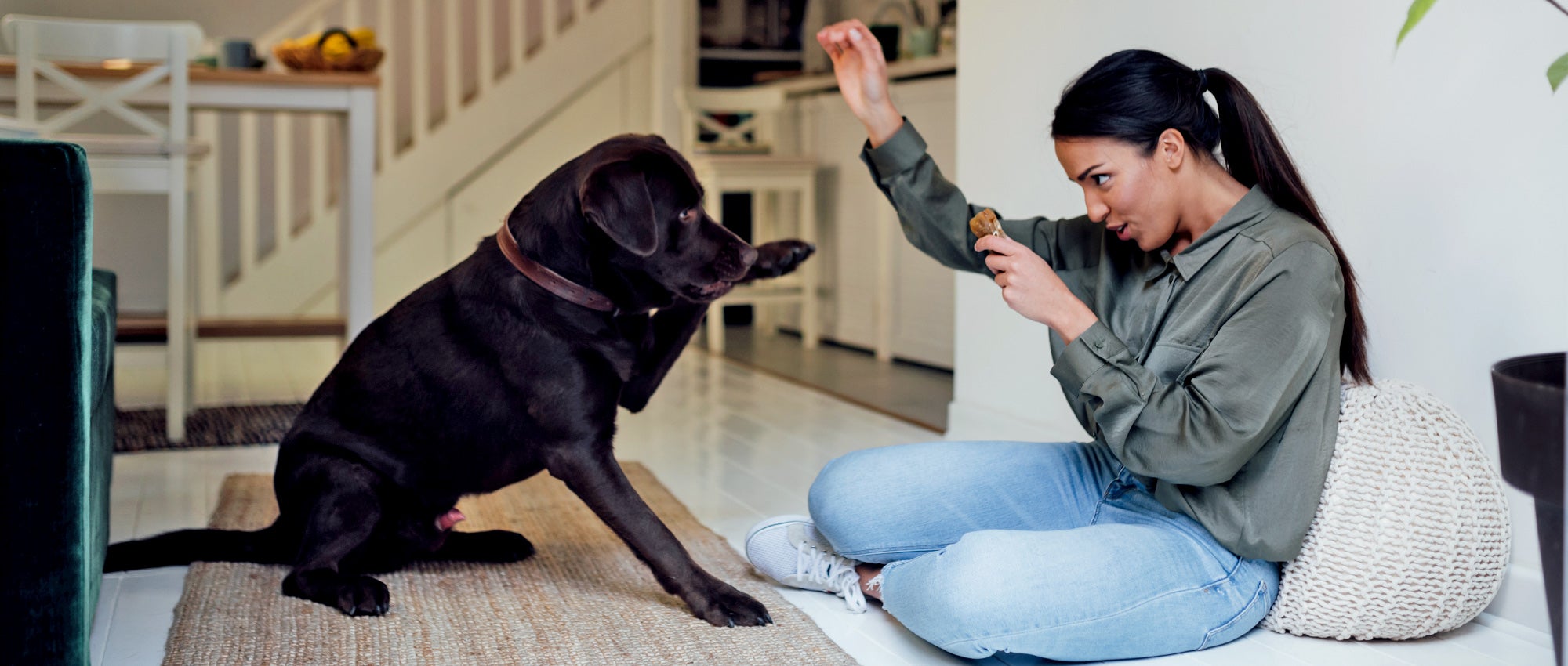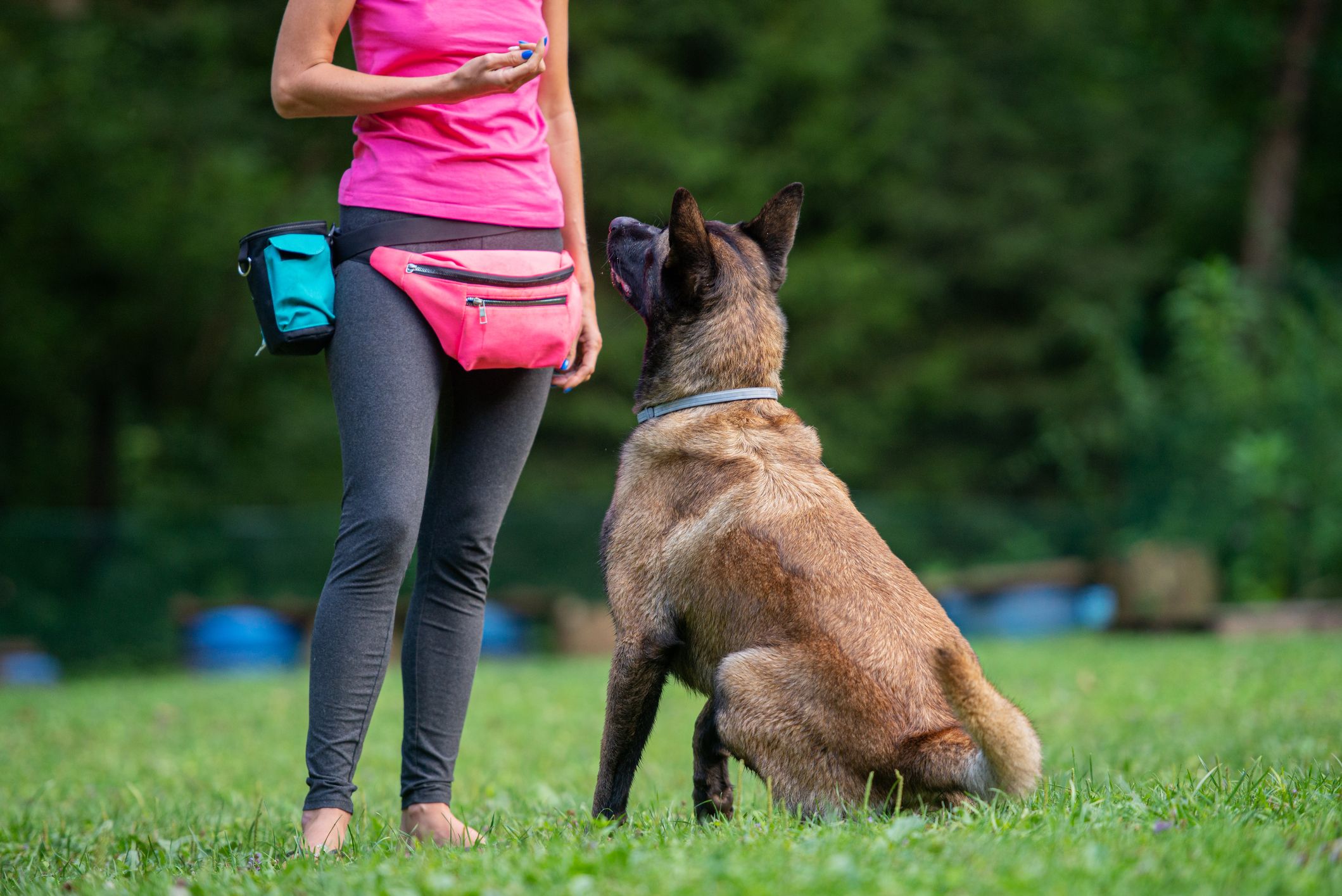Necessary Methods for Efficient Dog Training You Need to Know
Necessary Methods for Efficient Dog Training You Need to Know
Blog Article
Vital Tips for Effective Dog Training: A Guide for Family Pet Owners
Reliable canine training is a multifaceted process that calls for a critical approach customized to both the animal's temperament and the owner's objectives. Recognizing how to browse these challenges can dramatically improve the training experience, ultimately transforming the connection in between proprietor and canine.
Recognizing Dog Habits
Comprehending pet dog actions is important for effective training and cultivating an unified partnership in between pooches and their owners. Pets connect largely with body movement, articulations, and actions, making it vital for proprietors to translate these signals precisely. Acknowledging a canine's pose, tail setting, and ear orientation can give understandings into its mood. A wagging tail does not constantly suggest happiness; it can likewise signal excitement or anxiety.

Socialization plays a considerable function in pet behavior; direct exposure to numerous atmospheres, individuals, and various other animals can significantly influence a pet dog's personality. Variables such as type attributes and private character should lead training methods, as some types might have particular behavioral attributes that demand tailored techniques. By recognizing these aspects, proprietors can create a helpful environment that encourages positive actions, leading to successful training outcomes and a deeper bond with their animals.
Developing Consistent Commands
Efficient communication with your dog starts with developing constant commands. This fundamental aspect of training is crucial for cultivating understanding in between you and your pet dog. Consistency in the commands you use ensures that your dog can dependably link certain words or phrases with the wanted habits.
When picking commands, select clear, distinctive words that are very easy to claim and set apart from each other. Stay clear of using similar-sounding commands that may perplex your canine. For instance, making use of "rest" and "remain" is ideal, but "rest" and "struck" can lead to misconceptions.
In addition, preserve the exact same tone and volume for every command. Canines are delicate to singing cues, so differing your tone can produce confusion.
It is equally crucial to ensure that all household members get on the exact same web page regarding the commands made use of. A united front in command use will certainly protect against mixed signals and strengthen the understanding process.
Favorable Reinforcement Strategies
The power of positive reinforcement in pet training hinges on its capability to urge preferred habits through rewards and praise. This strategy is grounded in the concept that behaviors adhered to by beneficial results are a lot more likely to be duplicated. By integrating positive reinforcement right into your training routine, you can properly shape your pet dog's habits in a useful way.
To apply favorable reinforcement, it's important to identify what motivates your pet dog, whether it be treats, playthings, or spoken praise. When your pet does a Click Here desired action, such as resting on command, right away compensate them with a treat or affection. This association between the command and the positive end result strengthens their understanding.
It's critical to timing the incentives properly; delivering the reinforcement within seconds of the preferred actions helps your pet make the connection (dog training). Additionally, consistency is vital-- guarantee that all family members make use of the very same commands and reward systems to avoid complication

Gradually, you can minimize the regularity of treats as your dog learns the behavior, transitioning to applaud or intermittent incentives. This technique not only fosters a solid bond in between you and your pet however likewise promotes a favorable knowing environment, making educating a satisfying experience for both.
Socialization and Communication
Constantly exposing your pet dog to a variety of environments, individuals, and various other animals is critical for their social growth. Socialization should begin early, preferably throughout the critical window of 3 to 14 weeks, when young puppies are most responsive to brand-new experiences. Older pets can also profit from ongoing socialization initiatives.
Present your canine to different settings, such as parks, pet-friendly shops, and urban areas. This direct exposure aids them adapt to different stimulations, reducing anxiousness and anxiety feedbacks. Urge positive communications with other canines and people, making sure that these encounters are regulated and risk-free to cultivate look here confidence.
Use structured playdates with well-mannered pets, as this can enhance your dog's social abilities and teach them ideal habits. Obedience courses and training sessions likewise provide excellent opportunities for socialization, allowing your canine to communicate with others in a supervised environment.
Display your canine's body movement throughout interactions, as this will certainly assist you gauge their convenience degree. Progressively raise exposure to more tough situations while ensuring that each experience is positive. A well-socialized pet is most likely to exhibit well balanced behavior, making them a pleasure to have in any setup.
Dealing With Typical Training Challenges
Every canine owner will certainly experience training obstacles eventually, despite their pet's age or socialization degree. Identifying typical concerns such as stubbornness, interruptions, and terror can aid in establishing reliable strategies for enhancement.

Diversions throughout training sessions can thwart emphasis. To battle this, begin training in a quiet environment with very little stimuli. Slowly introduce diversions as the pet comes to be much more skillful in commands. Short, constant training sessions are additionally reliable in keeping focus.
Fearfulness can impede a canine's learning process. Gradual desensitization to the source of anxiety, coupled with favorable reinforcement, can aid relieve anxiousness. Perseverance is critical; never ever force a canine into a scenario that creates distress, as this might intensify the issue.
Ultimately, understanding and addressing these usual difficulties with a structured approach will certainly cultivate an extra efficient training experience, enhancing the bond in between pet dog and owner while advertising reliable discovering.
Conclusion
In recap, successful dog training depends on a comprehensive understanding of canine habits, the establishment of regular commands, and the application of positive support techniques. Socializing plays a critical function in developing well-adjusted pet dogs, while dealing with usual training difficulties calls for persistence and versatility. By carrying out these important techniques, pet dog owners can cultivate a strong bond with their dogs and promote desirable behaviors, eventually resulting in an unified relationship in between humans and their canine companions.
Recognizing canine habits is essential for efficient training and promoting a harmonious partnership between dogs and their proprietors.Socializing plays a considerable function in pet habits; direct exposure to numerous atmospheres, individuals, and various other animals can dramatically impact a canine's character.The power of favorable support in dog training lies in its capacity to urge wanted habits with incentives and appreciation. By including positive reinforcement right into your training routine, you can this link effectively form your dog's behavior in a useful way.
In recap, effective pet training relies on a thorough understanding of canine actions, the facility of regular commands, and the application of favorable support strategies.
Report this page